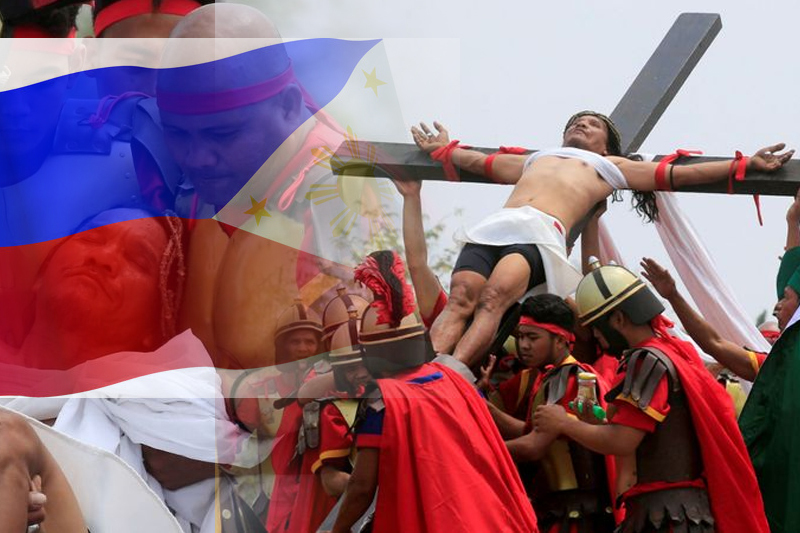
filipinos to be nailed to crosses despite church objection
Philippines — SAN PEDRO CUTUD In a bloody Good Friday tradition that is disapproved of by the Catholic church but draws throngs of devotees and tourists to the Philippines, an Asian center of Christianity, at least 12 Filipinos will be crucified to symbolize Jesus Christ’s suffering.
After a three-year hiatus brought on by the coronavirus pandemic, the actual crucifixions in the farming community of San Pedro Cutud in the province of Pampanga, north of Manila, were starting up again. At least 12 men, including Ruben Enaje, a 62-year-old sign painter who will be nailed to a wooden cross for the 34th time in Cutud and two other nearby villages, are expected to participate, according to the organizers.
Enaje declared that he would use his extraordinary penance—likely one of his last given his advanced age—to pray for the eradication of the COVID-19 virus and the cessation of Russia’s invasion of Ukraine, which has pushed up petrol and food prices globally.
A few days before the crucifixions, Enaje told The Associated Press, “I want to retire from this because of my age, but let’s see if my body can still bear the pain next year.”
Keep Reading
According to some media reports, the father of four is one of the world’s bravest men because of the annual feat, but he admits, “I always feel nervous because I could end up dead on the cross.”
“My body starts to feel cold as soon as I lie on the cross. I simply close my eyes and tell myself, “I can do this,” when my hands are tied. He said, “I can handle this.
He underwent the ordeal as a form of thanksgiving for what he perceived as a miracle after almost escaping unharmed when he fell from a three-story building in 1985. After family members began to recover from serious illnesses one by one, he continued the ritual, becoming a local celebrity as the “Christ” in the Lenten reenactment of the Way of the Cross.
Enaje and the other followers would carry heavy wooden crosses on their backs for more than a kilometer (more than half a mile) in the sweltering heat before being crucified on a dusty hill. Later, local actors dressed as Roman centurions would drive 10-centimeter (4-inch) stainless steel nails through his hands and feet before hoisting him to the air on a cross for about ten minutes.
Other penitents beat their bare backs with sharp bamboo sticks and pieces of wood as they stroll barefoot through the village streets. To ensure the ritual was sufficiently gory, some participants in the past broke the glass to open cuts in the penitents’ backs.
The macabre spectacle reflects the distinctively superstitious Catholicism practiced in the Philippines.
The ritual is performed by a large number of the mainly poor penitents to atone for sins, pray for the sick or a better life, and express gratitude for miracles.
Church leaders in the Philippines have condemned self-immolations and crucifixions, saying that Filipinos can demonstrate their strong religious commitment and deep faith without injuring themselves by giving blood, for example, or by participating in charitable endeavors.
The bloody rites, according to Robert Reyes, a well-known Catholic priest and human rights advocate in the nation, are a reflection of the church’s failure to adequately instruct many Filipinos on Christian principles, leaving them to seek divine intervention for various afflictions on their own.
Reyes cited a chaotic procession of a black statue of Jesus Christ known as the Black Nazarene each January, which authorities claim attracts more than a million devotees every year in one of Asia’s largest religious festivals, as evidence of how deeply ingrained folk Catholicism has become in the local religious culture. Many people bring towels to wipe on the wooden statue because they believe it has healing abilities and can promote health and a better quality of life.
Where were we churchgoers when they started doing this, you ask? Reyes enquired, saying that the clergy should interact more with locals and have regular conversations with them. “We’ll only alienate them if we judge them,”
Meanwhile, the ongoing executions have brought attention to the remote village of San Pedro Cutud in the rice-growing province of Pampanga.
20,000 tourists and believers from the Philippines and abroad are expected, according to the organizers, to attend the cross-nailing ceremonies. Police and marshals maintained order as the villagers sold bottled water, hats, food, and religious items.
They enjoy this because it is truly unique, according to Johnson. Gareth was a British tour guide who brought 15 tourists to see the crucifixions from eight nations, including the United States, Canada, and Germany. It’s not as gory as people think. They anticipate it to be extremely macabre or repulsive, but it isn’t. It’s carried out very respectfully.
The tourists were “genuinely inspired,” according to Gareth, and I believe they left with a newfound respect for people’s beliefs.









